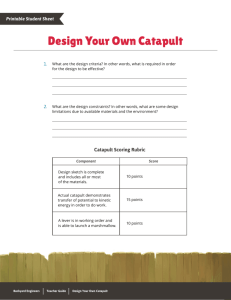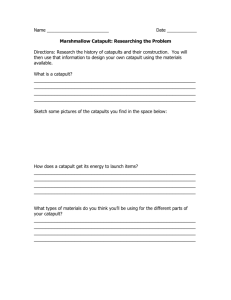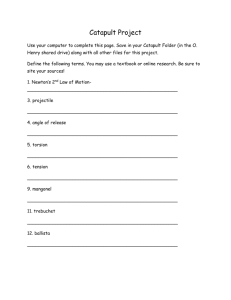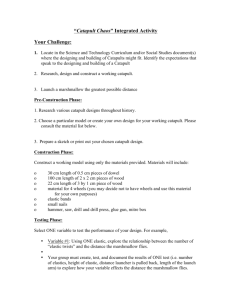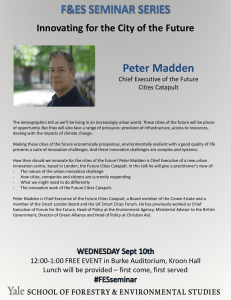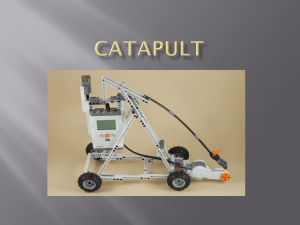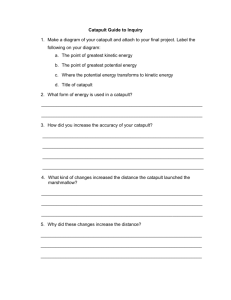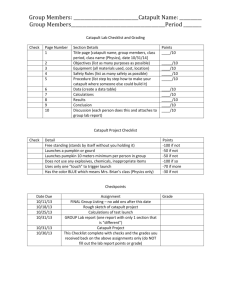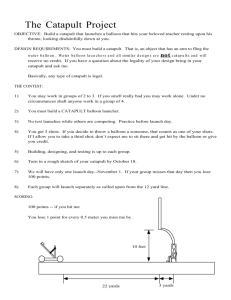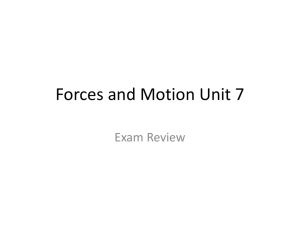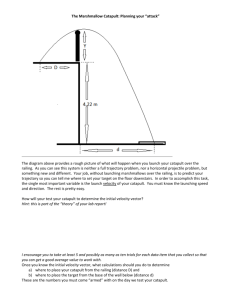catapult homework sheet
advertisement
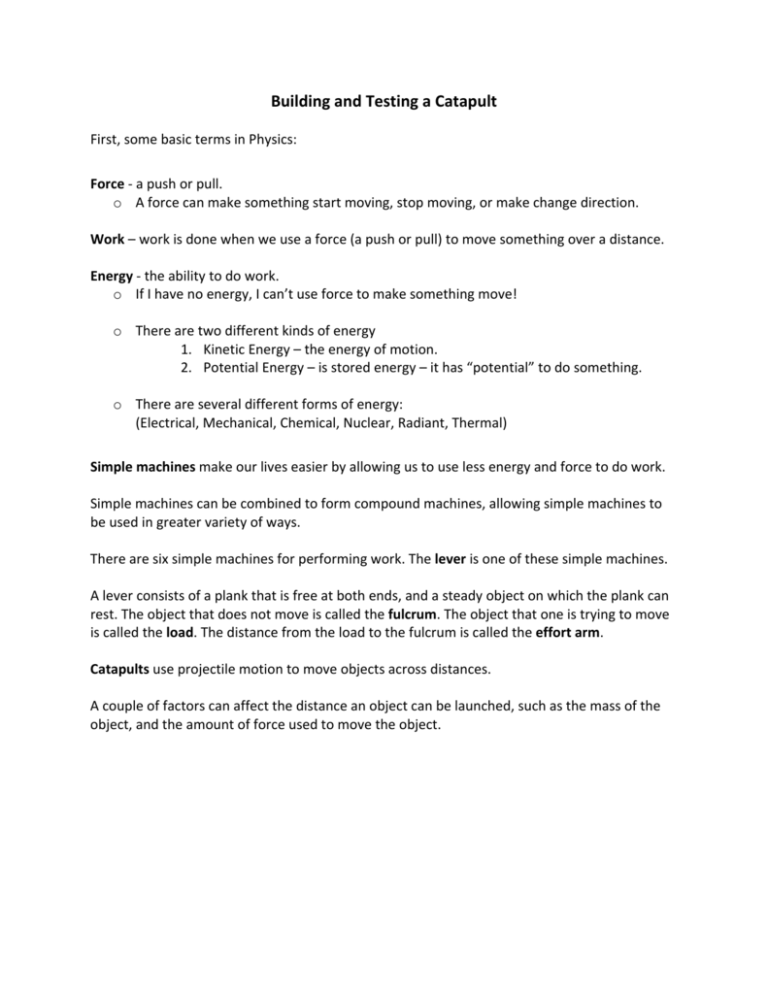
Building and Testing a Catapult First, some basic terms in Physics: Force ‐ a push or pull. o A force can make something start moving, stop moving, or make change direction. Work – work is done when we use a force (a push or pull) to move something over a distance. Energy ‐ the ability to do work. o If I have no energy, I can’t use force to make something move! o There are two different kinds of energy 1. Kinetic Energy – the energy of motion. 2. Potential Energy – is stored energy – it has “potential” to do something. o There are several different forms of energy: (Electrical, Mechanical, Chemical, Nuclear, Radiant, Thermal) Simple machines make our lives easier by allowing us to use less energy and force to do work. Simple machines can be combined to form compound machines, allowing simple machines to be used in greater variety of ways. There are six simple machines for performing work. The lever is one of these simple machines. A lever consists of a plank that is free at both ends, and a steady object on which the plank can rest. The object that does not move is called the fulcrum. The object that one is trying to move is called the load. The distance from the load to the fulcrum is called the effort arm. Catapults use projectile motion to move objects across distances. A couple of factors can affect the distance an object can be launched, such as the mass of the object, and the amount of force used to move the object. Your Assignment: Build a simple catapult using the directions provided in class. Test your design by launching mini‐marshmallows and measuring the distance achieved. Then, answer the following questions on a separate sheet of paper: 1. What form of energy is used in a catapult? 2. How does the catapult demonstrate Newton’s Laws of Motion (explain all three laws)? 3. What is the relationship between force and distance? 4. How can force be measured? 5. If the effort arm of a lever is shortened, what happens to the force needed to make the load move? 6. What kind of changes increased the distance the catapult launched the marshmallow? 7. WHY did these changes increase the distance? Make a diagram of your catapult below. Label: 1) the point of greatest kinetic energy, 2) the point of greatest potential energy, 3) where potential energy transforms to kinetic energy
